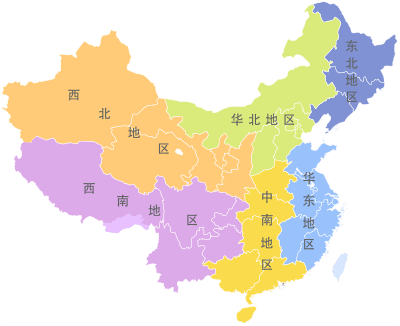History of Chongqing
The Chinese city of Chongqing has a history dating back at least 3,000 years.
Prehistory
Evidence of human activity in Chongqing has been discovered dating back to the Old Stone Age, approximately 20–30,000 years ago.[1] The fossils of a lower jawbone and teeth of an extinct non-hominin ape discovered near Wushan County in 1985 was originally thought to be a 2-million-year-old primitive human known as Wushan Man. This theory, originally proposed by Russell Ciochon, was reversed by the same scientist 15 years later – as it would void the "Out of Africa" hypothesis.[2]
Pre-unification
At the beginning of the Zhou dynasty in the 11th century BC, the State of Ba was formed by the population of eastern Sichuan. However, this was not more than a loose confederation of independent clans who recognised a single king. During the Warring States period, the State of Ba fell into decline, until it was absorbed by the State of Qin in 316 BCE. It is unknown why the State of Ba fell so quickly into decline, but it is thought that due to a lack of a sense of real unity, a powerful army could not be raised, leaving it open to attack by invaders.[3]
Imperial history
At different times throughout its history, Chongqing was known by several different names, including Jiangzhou, Ba Prefecture, Chu Prefecture (420–581), Yu Prefecture and Gong Prefecture (during the Northern Song Dynasty). In 1189, the area was renamed Chongqing Fu by Emperor Guangzong (then called Prince Gong).[1][4] Chongqing (literally, 'redoubled celebration') was renamed as such by Emperor Guangzong as he was promoted from the ruler of a Zhou to a Fu (area of special importance) and also promoted from the position of a Prince to Emperor Guangzong of the Song Dynasty in the very same year, hence the term 'redoubled celebration'.[5]
The Ming and Qing dynasties saw a period of rapid economic growth for the city as merchants gathered there from all over China. In 1891, the city's port was made open to the outside world, and a customs house was set up. In 1929, Chongqing was formally declared a city.[4]
Modern times
After the outbreak of the Second Sino-Japanese War in 1937, the Kuomintang moved its seat of government from Nanjing to Chongqing. In 1939 the city was made a municipality under the Executive Yuan and in 1940 was made the provisional wartime capital of China. In 1946, the seat of government was again moved, this time back to Nanjing. After the founding of the People's Republic of China in 1949, Chongqing remained the cultural and economic centre of southwestern China. In 1983, the economic reforms effected by Paramount Leader Deng Xiaoping were trialled in the city.[4] In 1997 Chongqing became the one of four municipalities directly under the central government in China, and the only one in western China.[1]
See also
References
- 1 2 3 History of Chongqing – Chongqing Municipal Government (accessed 2010-01-10).
- ↑ ^ Handwerk B. (2009). Early "Human" Is Ape After All, Discoverer Decides National Geographic News June 17, 2009
- ↑ Three Gorges Archaeology: Mysteries of the Ancient Ba People, CNHubei.com, 17 September 2008 (accessed 2010-01-10).
- 1 2 3 History of Chongqing, China Today Tours (accessed 2010-01-10).
- ↑ History of Chongqing, Green Travel (accessed 2010-01-10).
